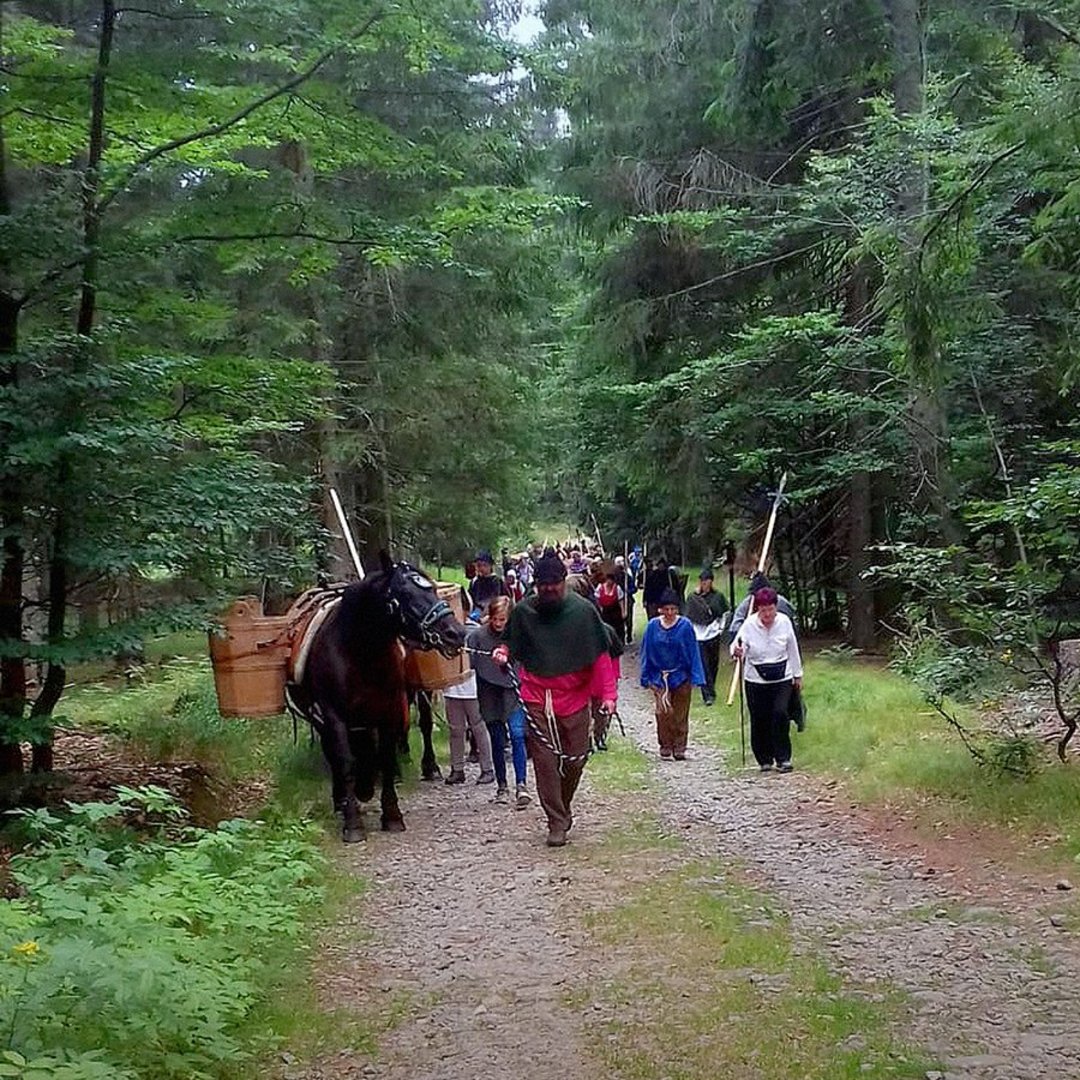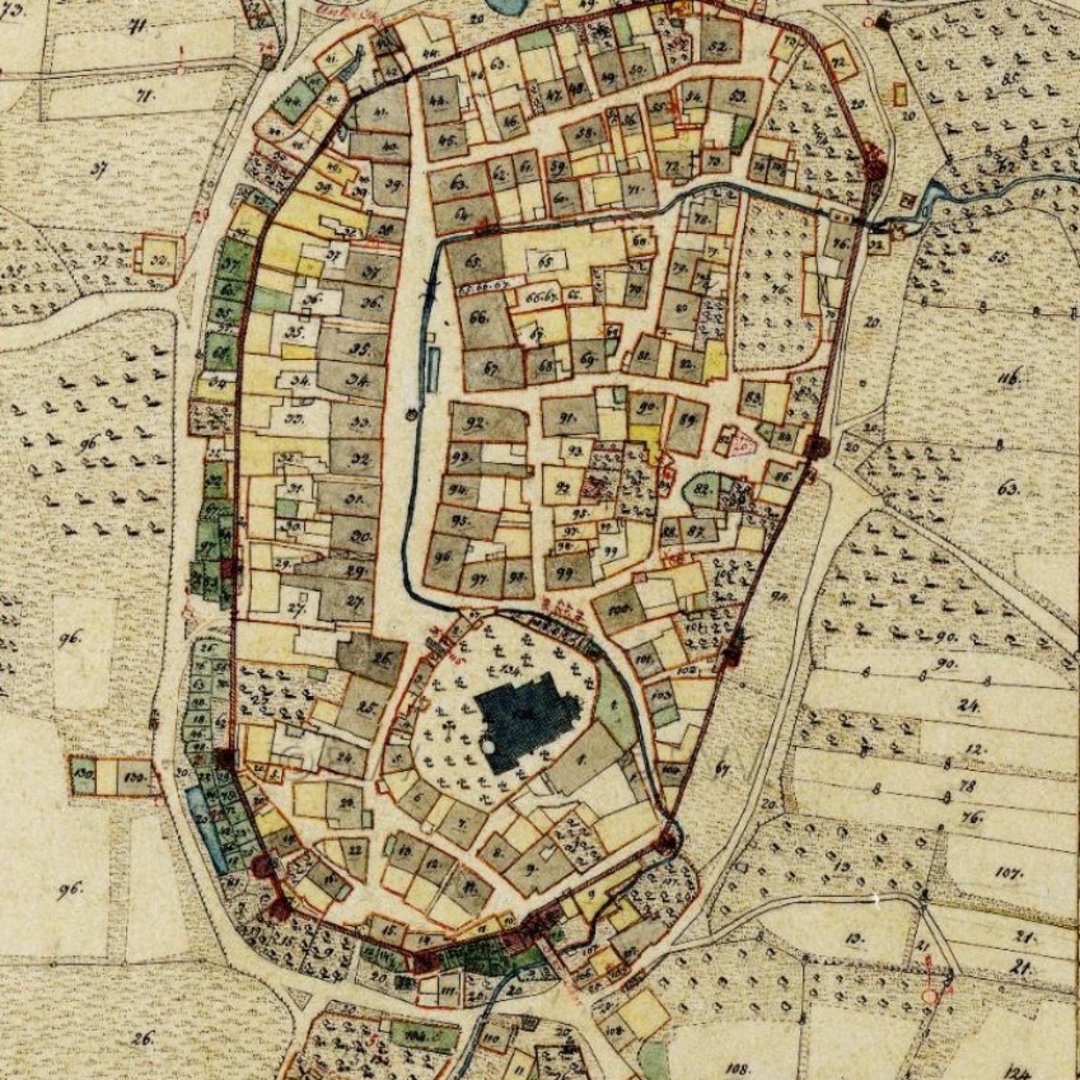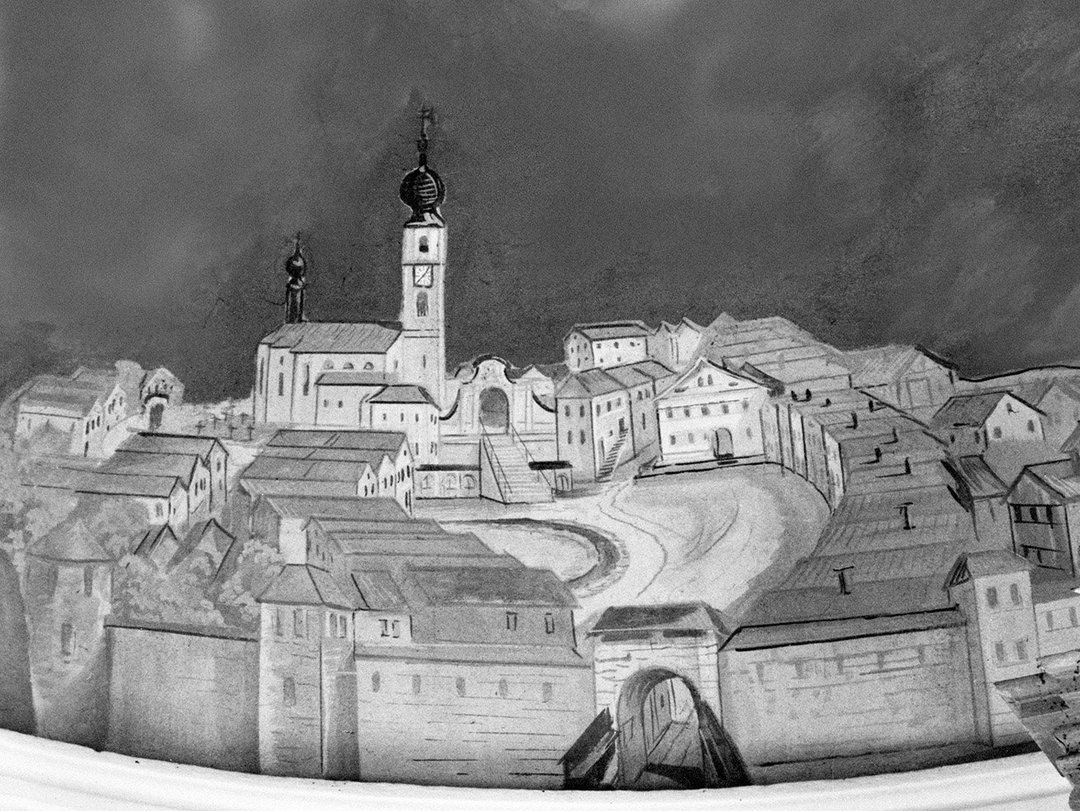Waldkirchen - Info point train station
SIGNIFICANT MARKET, THE RIGHT TO MINE SALT, CURTAIN WALL, PRIVILEGES
Waldkirchen, the main town at the Goldsteig Trail
Imagine sumpters passing in the direction of Bohemia, transporting the essential salt on their heavy loaded horses on the “Goldsteig Trail“. The history of Waldkirchen is closely linked to this mideaval trade route as the distance to Passau – a day’s march – made Waldkirchen an important market town, having the priviledges of holding markets (1285) and brewing beer. The sumpters were obliged to put up their night camp in the market and it was the episcopal village mayor who ensured law and order. Consequently, the lodging, hospitality and market days have been the source of prosperity and livelihood for the people of Waldkirchen for centuries.
Waldkirchen in earlier times
The secularization (1803) was to end the ruling of the bishops of Passau. Now, Waldkirchen was part of the Kingdom of Bavaria, being allocated to the district court of Wolfstein. The main economic factors included the granite and timber industry and the construction of a railway route from Passau to Bohemia. In 1972 Waldkirchen became a town.

Waldkirchen was the first destination during the first phase on the trade route “Goldsteig Trail“ from Passau to Prachatitz where the sumpters stayed overnight with their horses. Only ordinary people, wearing their goods on a basket on their backs, were allowed to take a shortcut via Schiefweg. The market town was safeguarded by the Bishop of Passau.
The heyday of the salt trade has influenced Waldkirchen to this day:
- The historic town square is still surrounded by the remainings of the middle-aged curtain wall with its ten defense towers.
- The old town square with its lodges and craftsmen offers an ideal place for shopping and relaxing.
- The parish church characterises the outline of Waldkirchen, living up to its honorific title "Dome of the Bavarian Forest".
- Today, the old sumpter village of Schiefweg is a district of Waldkirchen, famous for its important regional writer Emerenz Maier



